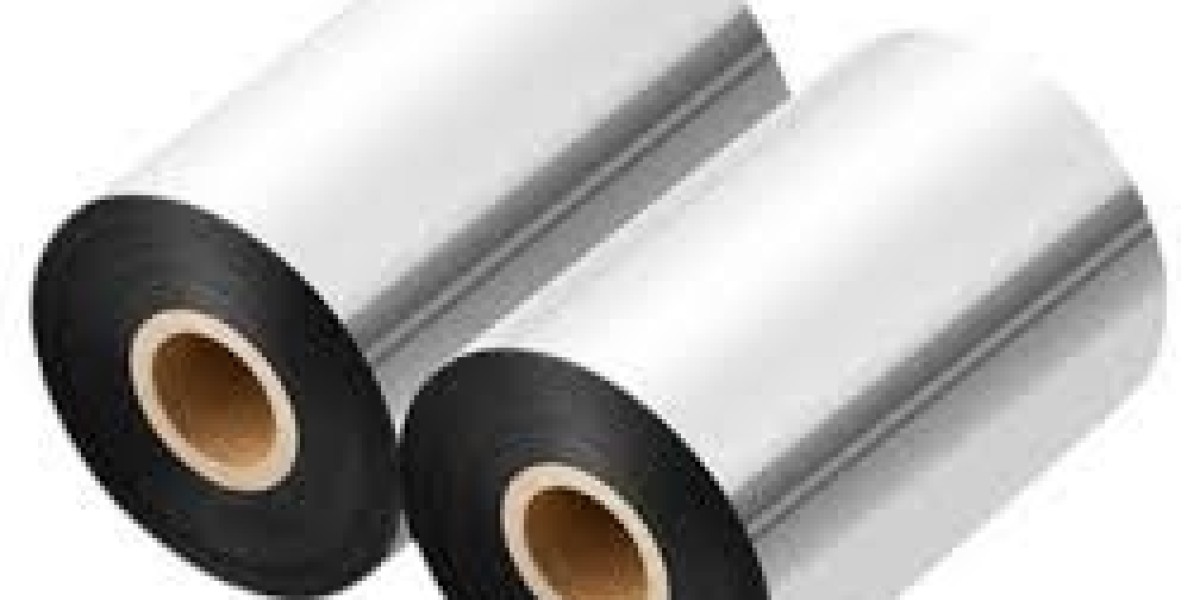In the world of barcode printing, the quality of the print and the durability of the label are critical for efficient inventory management, product tracking, and logistics. One essential component that determines the longevity and resilience of printed barcodes is the ribbon used in thermal transfer printing. Among the different types—wax, wax-resin, and resin—Resin Barcode Ribbon are considered the most robust and durable option. This article dives deep into what resin barcode ribbons are, their key benefits, applications, and how to choose the right one for your needs.
What is a Resin Barcode Ribbon?
A resin barcode ribbon is a type of thermal transfer ribbon used in printers that applies heat to transfer ink from the ribbon onto a label substrate. Unlike wax or wax-resin ribbons, resin ribbons are made primarily from synthetic resins. These resins melt at higher temperatures and bond deeply with the label surface, creating highly durable images that can withstand extreme environments.
Thermal transfer ribbons consist of three layers:
Backcoating: Prevents static buildup and protects the printhead.
PET Film: The base film that supports the ink layer.
Ink Layer: Made of resin in this case, which is transferred onto the label material through the printhead.
Key Characteristics of Resin Ribbons
Exceptional Durability:
Resin ribbons produce images that are highly resistant to abrasion, chemicals, solvents, moisture, UV light, and high temperatures. This makes them ideal for applications where labels must endure harsh conditions.High-Quality Print Resolution:
They provide crisp, high-resolution printing, which is essential for barcodes, QR codes, and small text to remain scannable and legible over time.Strong Adhesion:
Resin ink strongly bonds with synthetic label materials, especially those made from polyester, polypropylene, or polyethylene, ensuring the print doesn’t smear or fade.Slow Print Speed Compatibility:
Resin ribbons typically require slower printing speeds and higher energy settings due to their high melting points. However, this trade-off results in superior print quality and longevity.
Common Applications of Resin Barcode Ribbons
Resin ribbons are used in industries where labels must remain intact despite exposure to tough environments:
1. Electronics Manufacturing
Component labeling often involves high heat and chemical exposure.
Resin ribbons ensure the labels remain readable throughout the lifecycle of the product.
2. Pharmaceutical and Healthcare
Labels must resist chemicals, sterilization processes, and moisture.
Ideal for labeling lab samples, blood bags, and medication containers.
3. Chemical and Industrial Environments
Labels used on drums, pipes, and equipment must withstand solvents, oils, and weather elements.
Resin ribbons offer necessary chemical resistance.
4. Automotive Industry
Used for parts identification, compliance labeling, and under-hood labeling, where heat, oil, and vibration are common.
5. Outdoor Applications
Tags and labels exposed to UV light, rain, and fluctuating temperatures—such as in gardening, forestry, and construction—benefit from resin ribbon printing.
Compatibility and Label Material Considerations
Resin ribbons are not ideal for all types of label materials. They work best with synthetic materials rather than paper-based labels. Some of the compatible materials include:
Polyester (PET)
Polypropylene (BOPP)
Polyethylene (PE)
Vinyl
Using resin ribbons on paper labels may lead to poor adhesion and wasted material.
Choosing the Right Resin Ribbon
When selecting a resin ribbon, consider the following:
Printer Compatibility:
Make sure the ribbon is designed for use with your specific thermal transfer printer brand and model (e.g., Zebra, SATO, TSC, etc.).
Label Material:
Ensure the ribbon matches the surface material of your labels for optimal adhesion and print quality.
Environmental Conditions:
Match the ribbon’s resistance capabilities (e.g., chemical resistance, UV protection) with the environmental conditions your labels will face.
Regulatory Compliance:
In some industries, labels need to meet regulatory standards (e.g., GHS, UL). Ensure the resin ribbon is certified accordingly.
Ribbon Core Size and Length:
Choose the correct core diameter and ribbon length to fit your printer specifications.
Best Practices for Using Resin Barcode Ribbons
Use matched ribbons and substrates for optimal performance.
Clean the printhead regularly to prevent buildup and ensure long life.
Calibrate your printer when switching ribbon types to maintain print quality.
Store ribbons properly, away from heat and humidity, to preserve their integrity.
Conclusion
Resin barcode ribbons are the gold standard when it comes to durability and print quality in harsh environments. While they may come at a higher cost and require more precise handling compared to wax or wax-resin ribbons, the investment pays off in longevity and reliability. Whether you're labeling medical vials, automotive components, or industrial chemicals, resin ribbons ensure your barcodes stay readable and intact no matter what challenges they face.







